Generally...
Hibernate is used for handling database operations. There is a rich set of database utility functionality, which reduces your number of lines of code. Especially you have to read @Annotation of hibernate. It is an ORM framework and persistence layer.
Spring provides a rich set of the Injection based working mechanism. Currently, Spring is well-known. You have to also read about Spring AOP. There is a bridge between Struts and Hibernate. Mainly Spring provides this kind of utility.
Struts2 provides action based programming. There are a rich set of Struts tags. Struts prove action based programming so you have to maintain all the relevant control of your view.
In Addition, Tapestry is a different framework for Java. In which you have to handle only .tml (template file). You have to create two main files for any class. One is JAVA class and another one is its template. Both names are same. Tapestry automatically calls related classes.
